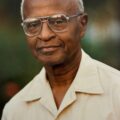Brooklyn, NY: President Donald Ramotar might have been surprised, like many, about the warm reception he got from the wide cross section of Guyanese who attended the formal launching of the Guyana Diaspora Project on Wednesday, at Marriot Hotel, Lexington Avenue, Manhattan.
Brooklyn, NY: President Donald Ramotar might have been surprised, like many, about the warm reception he got from the wide cross section of Guyanese who attended the formal launching of the Guyana Diaspora Project on Wednesday, at Marriot Hotel, Lexington Avenue, Manhattan.
The event lasted its scheduled 1 ½ hour, ending at 7.30pm, but the President was swamped for another two hours for autographs, photographs, and sharing of ideas or concerns. But beneath that exuberancy of the approximately 300 Guyanese, were whispers of cynicisms. One may interpret the combination of exuberance and cynicism as an expression of a Guyanese hope, will and longing to connect to a spirit of national identity and credible possibilities, rather than any solid confidence in what they heard.
The project is a collaborative effort between the Guyana government and the International Organisation for Migration, to construct a data base of expertise from the Guyanese Diaspora, for the purposes of national policy making and development. According to Minister of Foreign Affairs, Carolyn Rodrigues-Birkette , this is the beginning of a process of mutual engagement between the government and the diaspora to develop a system of structured involvement. She pointed out that the International Organisation for Migration which recently opened an office in Guyana would be critical since it has the experience.
As no time was allotted for questions and answers, persons privately whispered that all previous attempts at similar ventures failed and that there are Guyanese organisations in the diaspora which already have data bases of persons who want to contribute to Guyana. They claim that the attempts were stymied because the government has historically never been committed, despite its promises, or has conveniently closed or opened opportunities.
They identified concrete cases where Guyanese who offered their services were by-passed for foreigners who were even trained by the very Guyanese. Perhaps, the Minister meant to pre-empt this concern when she said, “Today is the beginning of walking the talk.” But as much as the cynics indicate a desire for the project, there are levels of confidence deficits which the current project initiators would have to diffuse.
Like the Minister, President Ramotar shared the view that Guyanese all over the world are still interested in Guyana, and suggested that in Guyana, the perception of migration has to change as migration is inevitable, especially with the globalization of technology and information which exacerbate the determinants. He noted that many Guyanese in the diaspora are at the pinnacle of their professions and “we should open ourselves to their ideas…and benefit from the most up to date ideas.” And since they are distant from the everyday rancor of the society “we can benefit” since they would be more objective and rational in dealing with the issues, he said.
What is required is a strategic relationship between Guyana and the diaspora for development the President emphasized, illustrating for example, that while corruption in Guyana is an extension of historical patterns, the lack of skills are also responsible. He explained that some of the infrastructural travesties, such as short life span of roads, resulted from deficiencies in skills.
He added that expanding and networking the infrastructure is critical to the development process, and at this time the supply of infrastructural works is greater than the domestic capacity to execute; government is currently debating the employ of foreign contractors. It would be more so, as Bonasika becomes the third bauxite producing area, manganese production restarts by year-end, the hydro-electric project is completed in 4 years, plans to link up the country’s communities are pursued, the low carbon development strategy take effects, the agricultural sector is reformed, etc. These are opportunities for the diaspora the President suggests, indicating that GUYSUCO needs the diaspora’s input at this time. But more importantly these projects are important for job creation.
Furthermore, the President argued that instead of Guyana’s growth rate averaging around 5% despite the economic recession of its primary trade partners, Europe and the USA, Guyana would have been growing at rates approximating that of China if the issues of cheap energy and skill deficiencies were resolved.
Persons still want to know, what is the vision for the country as distinct from these piece meal projections? At least, they want to understand how these projects fit into the vision to determine how they can fit into the plans.
One participant remarked that “it is a fantastic project for Guyana” but warns that it would fail if it is not conceptualized in a way that marries vision, strategy and elements of sustainability. To her, the foundation of sustainability has to be the preparation of children for the changing environment. She argues that the diaspora’s involvement should at least be “bi-directional”. Meaning that like the diaspora, resource mapping of Guyana must also be done; training would be required so that the diasporic and local actors will see the project as process of exchanging and building on knowledge rather than as a superior-subordinate relationship; persons from the “diaspora will need to learn how to interact in Guyana”, etc.
Director of the International Organisation of Migration, William Swing, in his presentation had indirectly addressed the issue of sustainability but from a global perspective. He suggested that the global patterns of migration may require new laws that facilitate diaspora representation in parliament, dual citizenship, etc. Several persons have indicated a will to submit written proposals to the President. Persons interested in the project may visit the web site:
http:www.guydproject.iom.int
By Lin-Jay Harry-Voglezon of the American International News Service





